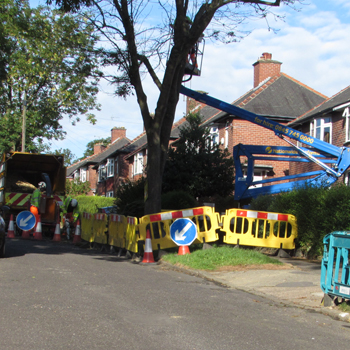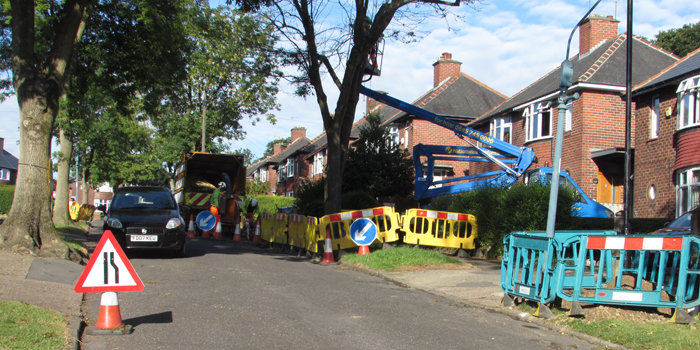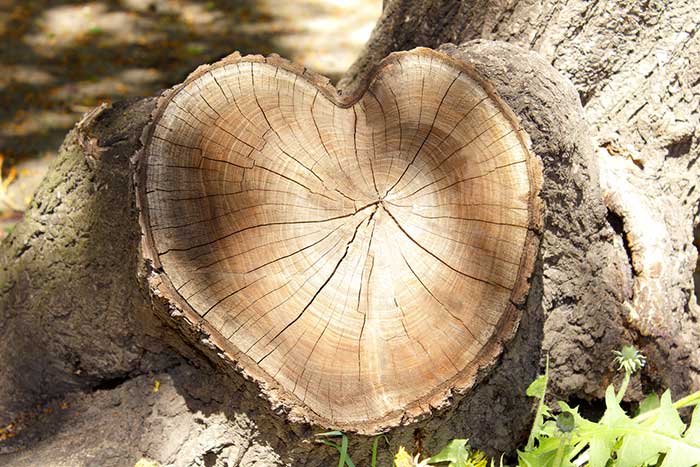
The Ethics of Tree Removal
Tree removal has sometimes drawn an ambiguous line on ethics. In light of events in Sheffield, that is highlighted more than ever. The local government’s Streets Ahead program had been strongly opposed by local citizens. This city-wide project aims to upgrade the area’s roads, street lights, bridges, and structures. This has led to the widespread tree-cutting, which protesters and the Sheffield Tree Action Groups (STAG) are driven to stop. The ambitious 25-year project started in 2012 to facilitate the city’s transformation into, according to the local council, one of the best in the UK.
Arboriculture, here, has become more than a profession – it has turned into a political and social issue for citizens. Activists use their civil liberties to voice their plea against felling, as they call for elected constituents to take action. The clash has recently been underscored by violence, with protesters wearing masks and even threatening arborists. The issue has grown to be so hotly debated, even the Environmental Secretary, Michael Gove has waded in to discuss alternative solutions to felling the kerbside trees.
In such situation, where should an arborist stand? Many an arborist would have often been in a situation when he or she was expected cut down a healthy tree for the benefit of a client. But in cases like Sheffield, the loss of multiple healthy, mature trees where alternative routes could be explored and potentially the trees retained, seems too much of a waste. There is always more than one side to a story. Let’s explore all of them and see how this dilemma can be addressed.

Fighting Tree Removal
To those against tree removal, the common premise is that trees are a precious natural resource. They take decades to reach full maturity and contribute to ecological health and quality of living. Trees contribute by achieving the following:
- Provide clean air
- Mitigate adverse environmental effects including climate change
- Conserve energy by cooling streets and cities
- Promote wildlife diversity
- Increase property values
- Add recreational benefit for the community
Above examples show that trees are of value to social, communal, environmental and even economic factors. The cutting down of trees, more so matured trees, can lead to poor air quality and a higher risk of flooding. Felling is seen as an act of depriving the future generations of a healthy well-being.
For others, tree removal is incorrect if done without valid justification. Various factors, such as maturity, length of lifespan, overall health, structural integrity, and strength are all factors to be thoroughly reviewed before taking any step.
Other activists strongly support the implementation of maintenance solutions over complete tree removal. That includes pruning, the removal of dead or diseased branches or bracing. They believe that in many cases, cleaning, thinning, raising and reduction are enough to reduce the risk posed by damaged trees.

Supporting Tree Removal
For the advocates of tree removal, there can be resultant benefits which are perhaps overlooked by the potentially unbalanced objections of protesters. For a start, trees are renewable sources and if removed, new trees can be planted. In some cases, felled trees are replaced with other species which are more healthy, more environmentally diverse, planted in better or more healthy placement or more aesthetically pleasing.
There are extremists who uphold irresponsible logging practices, putting corporate greed above sustainability. However, when felling is carried out responsibly, trees are sources of wood, cellulose and other by-products and they allow manufacturers to produce daily commodities such as wood, papers, cleaning compounds, and even industrial explosives.
Supporters also back tree removal for civic causes. For example, felling makes road widening and infrastructure development possible and these improvements can result in better accessibility and economic progress in the long run.
There are also cases when weak trees are life-threatening and dangerous to communities. Leaning trees, cracked lower trunks, and broken large limbs are potentially hazardous and may cause injury to people and damage to properties. Removal of decayed and damaged trees is doubly essential before a severe storm strikes.
In terms of landscaping, tree removal is sometimes key to creating an aesthetically pleasing area and delivering clients’ requests. At times, large trees – healthy or not – may obstruct passage and sunlight.
Removal also gets to the root of tree pests and diseases. One example is the oriental chestnut gall wasp. It affects chestnut trees and causes abnormal growths, called galls, to form on the buds, leaves, and petioles. Insecticides are unlikely to be effective because the galls encase the larvae of the said pests, thus protecting them from chemical treatments. The primary solution for this is to eliminate affected trees to keep the pests from preying on other trees. In other cases, diseased trees need to be removed to help prevent the disease becoming more widespread.
Setting The Line
For arborists who desire to stay ethical, it is about weighing up the benefits and environmental responsibilities against the risks and issues, taking balanced ground, and if necessary, being prepared to turn a job away if it is clearly unethical to carry out a client request. There are good reasons to cut trees, but irresponsible practices are inexcusable.
Verify first if a tree can still be preserved, or it is no longer wise and cost-effective to maintain it. Check your client’s motivation behind the tree removal. Determining the best course of action is essential before anything else. Here’s a list of criteria to help review a tree’s viability:
- Species. Some tree types typically have weak wood, shallow roots, prone to diseases, or invasive due to prolific seeding. These characteristics allow them to cause damage, making them undesirable. Examples are the black locust, Siberian elm, and willows.
- Health. A tree should be cut off if 50% of it is damaged. Although an unhealthy tree may survive for years, they often have stunted growth or abnormal appearance.
- Structural Integrity. Check for large dead branches. While crossed branches can be pruned, trees with more than 25% of its trunks dead can be subject to tree removal. If all dead branches are located on one side of the tree, it may cause it to become lopsided and unsafe. A hollow trunk also compromises the tree’s strength.
- Root damage. If an excavation has damaged more than half of the tree’s root, it can be marked for felling.
- Environment. Trees that have grown near bodies of water most often have shallow roots. On the other hand, removing nearby trees can cause extreme stress to remaining trees if they were to face a sudden change in sunlight exposure. They usually succumb within 3 to 5 years.
The available space must also be taken into account. While trees in the forest grow well in clusters, that will not work for houses and commercial areas. It is best to keep large trees at least 20 feet away. As for those along roads and thoroughfares, they must not interfere with drivers and pedestrians’ line of sight.
Here are tips to remain ethical as arborists:
- Stay up-to-date with trends and legislation affecting the industry.
- Adhere to acceptable arboricultural practices and regulatory issuances.
- Be prepared to offer alternative solutions where possible, such as bracing or remedial work
- Prepare clear and well-written plans and estimates. Communicate them to your customers to avoid confusion.
Some arborists even claim to select their clients, only offering their services to reputable firms and individuals. Whatever your strategy is to stay principled, ensure you practice in a professional and safe manner.
